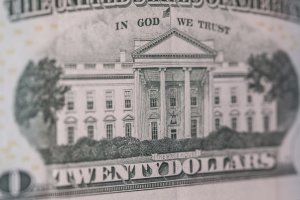Policy hype but vintage fiscal economics from Godley, Lerner, and Keynes
Chemists synthesize new, useful compounds from those that already exist. Over the past decade or so, a group of economists followed their example by synthesizing Modern Monetary Theory or MMT. So how useful and novel is MMT? As a proposal for expansionary redistributive macroeconomic policy in the present situation, it makes sense within limits imposed by inflation, debt accumulation, and foreign constraints. As economic theory it is a mélange of vintage fiscal ideas from Maynard Keynes, Abba Lerner, and Wynne Godley. For the details and more see Taylor (2019); this short post summarizes key points in the longer paper.
The ”compounds” blended into MMT include the Chartalist theory of fiat money, functional finance proposed by Lerner (1943) as an extension of Keynes’s ideas in his General Theory (1936) and Godley’s insistence on overall accounting consistency in macro modeling (Taylor, 2008).
Chartalism is a bureaucratic German view of money from the early 20th century. It says that money is legally a creature of the state, incorporating a modern central bank. Money becomes the means of exchange because the state rules that it must be used to pay taxes. In his Treatise of Money, Keynes (1930) observed that Chartalism ignores the fact that the state gives itself the right to rule that money must be used for payments connected with all contracts, not just tax obligations. It uses its “monopoly on legitimate use of violence” (the German sociologist Max Weber’s phrase) to enforce the rules. The taxation trope is irrelevant for all practical purposes.
Functional finance is the heart of fiscalist Keynesianism incorporating “automatic stabilizers” for the business cycle. In old-fashioned economic language set out by Jan Tinbergen (1952) it assumes that fiscal policy (say the overall government deficit) is a policy “instrument” directed (or “assigned”) to reach an output and (un)employment “target.” Monetary policy, e.g. the short-term interest rate, is assigned to (try to) control inflation.
Aside from using a big jump in the interest rate to stage a recession that reduces inflation (as in the Federal Reserve’s shock treatment of 1980), monetary adjustment may be ineffective. The Fed is not having much luck in reaching its current two percent annual inflation target.
Changes in the fiscal deficit, on the other hand, are strongly anti-cyclical. Along with occasional bursts of “discretionary” policy such as President Obama’s wimpy, underfunded 2009 stimulus package, automatic stabilizers including lower tax collections and higher fiscal transfer payments built into existing programs help smooth economic activity over time. The share in GDP of government net borrowing (spending minus income) may increase by up to ten percentage points during and after a recession. MMT’s proposal for employment stabilization is a job guarantee that might kick in at a level of one percent of GDP if employment were to fall by four percent (a hefty decrease). It could be a welcome supplement to the existing system of stabilizers. In terms of supporting effective demand, however, a one percent GDP boost is small in comparison to the system already in place.
One can put together a simple accounting system based on Godley’s strictures to guesstimate the impacts of expansionary, redistributive fiscal policy as in recent proposals informed by MMT. Suppose that government spending to attack global warming goes up by 3.5% of GDP (current outlays on defense run the range of three percent). Medicare is basically a transfer program. Extending its coverage to 20 million people and also providing free college tuition might raise fiscal transfers by three percent of GDP. Factoring in possible increases in the private saving rate suggests that this package might increase output by more than 10%, the fiscal deficit by 70% and the current account deficit by 50%. Other calculations such as Palley (2019) come out in the same ballpark.
In the course of one year, such a huge macroeconomic jump is not going to happen. One could imagine it phasing in over a few years’ time. What would be the impacts on inflation, fiscal debt, and external balance?
Inflation in the sense of ongoing price increases at an exponential rate requires that cost per unit output should increase roughly as fast as the price level. Labor payments or wages are the principal components of cost. For the past five decades, wages have not risen as rapidly as prices (Taylor, 2020). The labor share of value-added has decreased by about eight percentage points, meaning that the price level has consistently outrun rising nominal labor cost (growth in the money wage rate minus growth in productivity). Data from the past few decades suggest that a two or three percentage point increase in the labor share might boost the annual inflation rate by one point. Unless there is substantial redistribution toward labor (without much impact from the level of economic activity), an expansionary MMT package would not run a great risk from inflation. But ending wage repression is presumably an MMT policy objective.
Fiscal debt could be more worrisome. Its ratio to GDP under the MMT package would rise at 9% per year, fast enough to reach $1.6 trillion dollars in five years and $5.6 trillion in the long run. Just who is to absorb such rapid expansion of Treasury securities? The Fed now holds just 15% of the total – private bondholders take up the rest. They would not tolerate nine percent growth indefinitely. MMT proposes offsetting bond purchases by the Fed. The Bank of Japan (BOJ) provides an example. It now holds around 50% of outstanding government bonds, up from 8.5% in 2011. Japan’s fiscal deficit as a share of GDP declined from 11% to 6% over the period.
Holding an increasing share of a rapidly growing bond supply puts the BOJ in a bind. Net selling against rapid supply growth could be difficult, meaning that it could not raise Japan’s ultra-low interest rates even if it wanted to. This experience suggests that there could be strict limits to the Fed’s ability to offset debt accumulation caused by highly expansionary fiscal policy.
Somewhat similar considerations apply to an external deficit of 3.9% of GDP or $808 billion. Outstanding Treasury debt held abroad is $6.4 trillion. A potential run against the dollar could not change this total by very much because there is no large-scale alternative global asset. MMT emphasizes how the American economy is protected from external shocks because it can borrow from the rest of the world in terms of its own currency.
This protection, however, is not invincible. Even the almighty dollar cannot avoid foreign exchange risk. There are financial instruments besides American liabilities available in the world market. A visible portfolio shift against Treasury debt would have to be met in one of two ways (or a combination). If the interest rate is held constant, the exchange rate would have to depreciate or rise. The US import coefficient is only 16%, but if prices of key imported consumer commodities were to jump upward, the impact could provoke inflation (especially if wages manage to rise in response). On the other hand, if the Fed intervened to stabilize the exchange rate, then the interest rate would have to increase to draw in foreign funds, potentially cutting effective demand. Either reaction would be a threat to a stimulus package.
The bottom line is that MMT’s aims are exemplary but an aggressive fiscal stance carries some risk. The doctrine’s theoretical synthesis adds little to the vintage ideas of Godley, Lerner, and Keynes. MMT revamps them with an expansionary thrust but is no striking intellectual synthesis. A better acronym would be VFT, or Vintage Fiscal Theory.
References
Lerner, Abba P. (1943) “Functional Finance and the Federal Debt,” Social Research, 10: 38-51.
Keynes, John Maynard (1930) A Treatise on Money, London: Macmillan.
Keynes, John Maynard (1936) The General Theory of Employment, Interest, and Money, London: Macmillan.
Palley, Thomas (2019) “Macroeconomics vs Modern Monetary Theory: Some Unpleasant Keynesian Arithmetic,” http://www.postkeynesian.net/downloads/working-papers/PKWP1910.pdf.
Taylor, Lance (2008) “A foxy hedgehog: Wynne Godley and macroeconomic modeling,” Cambridge Journal of Economics, 32: 639-663.
Taylor, Lance (2020) Macroeconomic Inequality from Reagan to Trump: Market Power, Wage Repression, Asset Price Inflation, and Industrial Decline , New York: Cambridge University Press.
Tinbergen, Jan (1952) On the Theory of Economic Policy, Amsterdam: North-Holland.






